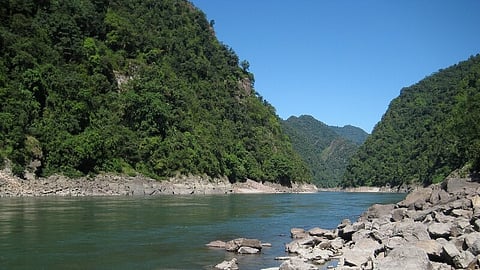
- Home
- Live Blog
- Breaking News
- Top Headlines
- Cities
- NE News
- Sentinel Media
- Sports
- Education
- Jobs

Granting of approval to the Dibang Multipurpose Project by the Cabinet Committee on Economic Affairs on Wednesday is both good news and bad news for the Northeastern Region. The good part of the news is that it is going to be the largest-ever hydroelectric project in the country, which will have a 2789-metre dam, which, on completion, will produce 2880 MW of electric power. Arunachal Pradesh, the state where the project will be located, will get 12 per cent power free, apart from another one per cent under Local Area Development Fund, which together will amount to a little over 374 MW, which the state will be able to sell to the neighbouring states or put on the national grid till it is not able to fully utilize it. This will bring huge revenue to Arunachal Pradesh. Alongside, people of Arunachal Pradesh will be able to avail the opportunity of livelihood both in terms of direct and indirect jobs as well as other economic activities. There is also good news for neighbouring Assam because the project being envisaged as a storage-based hydroelectric project with flood moderation as the key objective. The Centre has pointed out that the Dibang project, once completed shall prevent a sizeable downstream area from floods that have been caused almost every year by the snow-fed river as it flows down to the Brahmaputra. Now the bad part of the news. One, it is going to submerge a large area in Arunachal Pradesh, which in turn will displace several hundred families belonging to the indigenous tribal communities. Two, it is going to submerge a huge tract of vegetation including rich forests with highly endangered species of both flora and fauna. Three, going by the experience of the Ranganadi hydroelectric project, Dibang will also run the risk of causing floods in the downstream areas in Assam every time the authorities start releasing water in the monsoon season. Four, like the controversial Lower Subansiri project, it will also run the risk of being exposed to earthquakes, given the fact the entire Northeast in general and Arunachal Pradesh in particular are located in one of the most highly seismic zones of the world. The government, taking into consideration the immediate experience of the jinxed Lower Subansiri Hydro-Electric project which had triggered off massive protests and flagged off a number of environmental issues, should thus immediately come out with a white paper on the various aspects of the Dibang Multi-Purpose Project. This needs to be done even before a massive agitation begins, so that all the fears and apprehensions are addressed before the situation goes out of control. It is a fact that the Northeastern Region too needs development, for which it requires electricity. But then, the region as a whole also requires assurances and guarantees against natural calamities, especially when the past experience has not been very happy. The government should also come clear on issues relating to submergence of human habitations and forest areas, while some reputed environmental research groups and organizations should be roped in at the earliest to make a transparent on-the-spot assessment of the various issues before an agitation is triggered off. The government should also take into consideration the issues that have been flagged off by the National Green Tribunal in the context of the Lower Subansiri Hydro-Electric Project, so that construction work of the ambitious Dibang project does not get stalled mid-way, as has happened to Lower Subansiri. A series of public consultations should also be held at this early stage so that the people of Arunachal Pradesh as well as downstream Assam can air their apprehensions and get the right kind of assurances and remedies before things get out of control.